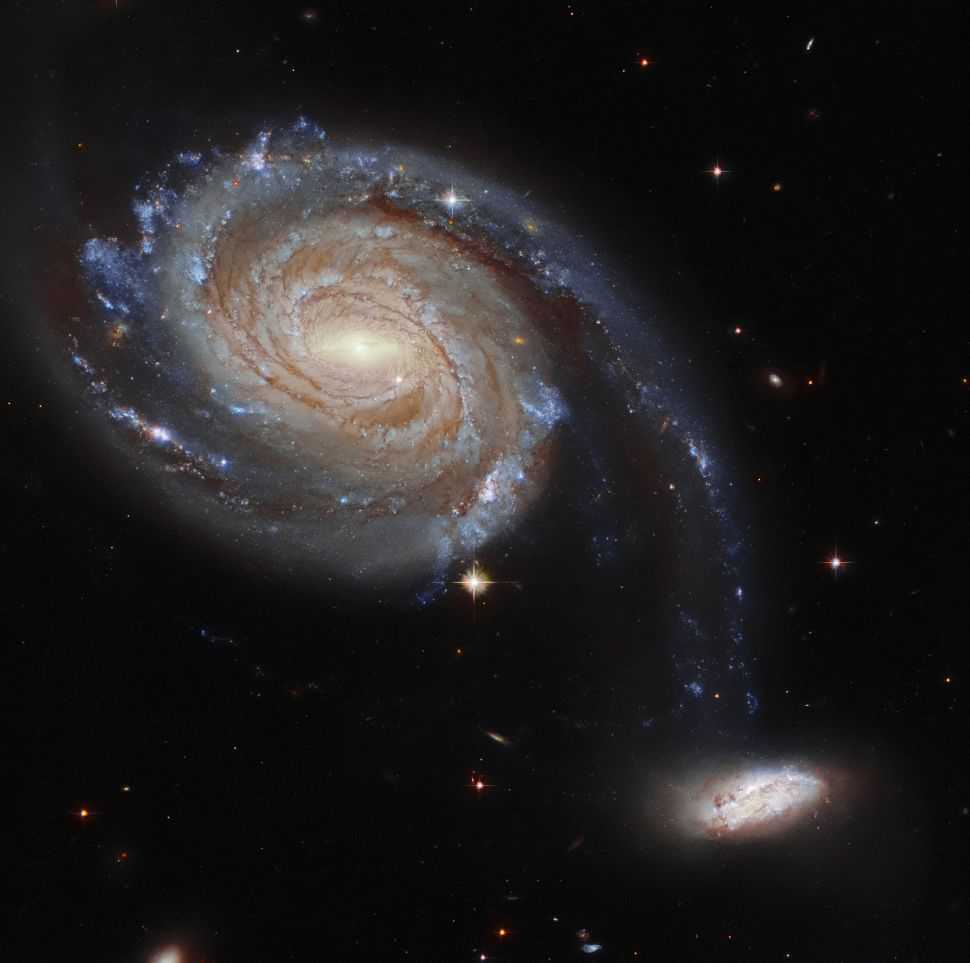Hubble telescope spots a pair of 'squabbling' galaxies locked in cosmic dance

The Hubble Space Telescope caught a pair of "squabbling" galaxies in action, according to the European Space Agency.
The pair of objects is known as Arp 86 and includes two galaxies roughly 220 million light-years away from Earth in the constellation Pegasus. They are known individually as NGC 7753 and the much smaller companion NGC 7752.
"The diminutive companion galaxy almost appears attached to NGC 7753, and it is this peculiarity that has earned the designation 'Arp 86' – signifying that the galaxy pair appears in the Atlas of Peculiar Galaxies compiled by the astronomer Halton Arp in 1966," ESA officials wrote in a statement about the new research.
"The gravitational dance between the two galaxies will eventually result in NGC 7752 being tossed out into intergalactic space or entirely engulfed by its much larger neighbor," the added.
The Hubble Space Telescope observations were meant to shed light on how cold gas in the area contributes to the formation of young stars observed in the image. The observatory examined star clusters, gas clouds and dust clouds in several environments in the neighborhood, including other galaxies outside of Arp 86, ESA stated.
The space telescope's work was combined with measurements from the Atacama Large Millimeter/submillimeter Array (ALMA), a set of telescopes in the Chilean Andes optimized to peer through galactic dust in young systems. Between ALMA and Hubble, the research team is seeking more information about how stars are formed.
The research will also assist with future work by the James Webb Space Telescope, which is set to launch late in 2021 to explore the origins of the universe. One of Webb's research projects will be to look at dusty galaxies (such as Arp 86) to learn more about star evolution, ESA stated.
Tags :
Previous Story
- Why are the stars, planets and moons round,...
- Samsung's Galaxy Watch 4 could be a peek...
- Galaxy S20 Ultra review: Impressive but impractical
- Galaxy S20 Ultra: Top camera features finally seem...
- Galaxy S20 Ultra: Our 5 favorite camera features,...
- Galaxy Fold successor surfaces on samsung support pages;...
- Samsung offers amazing offers and deals on Galaxy...
- Samsung Galaxy S11 to come in three sizes,...